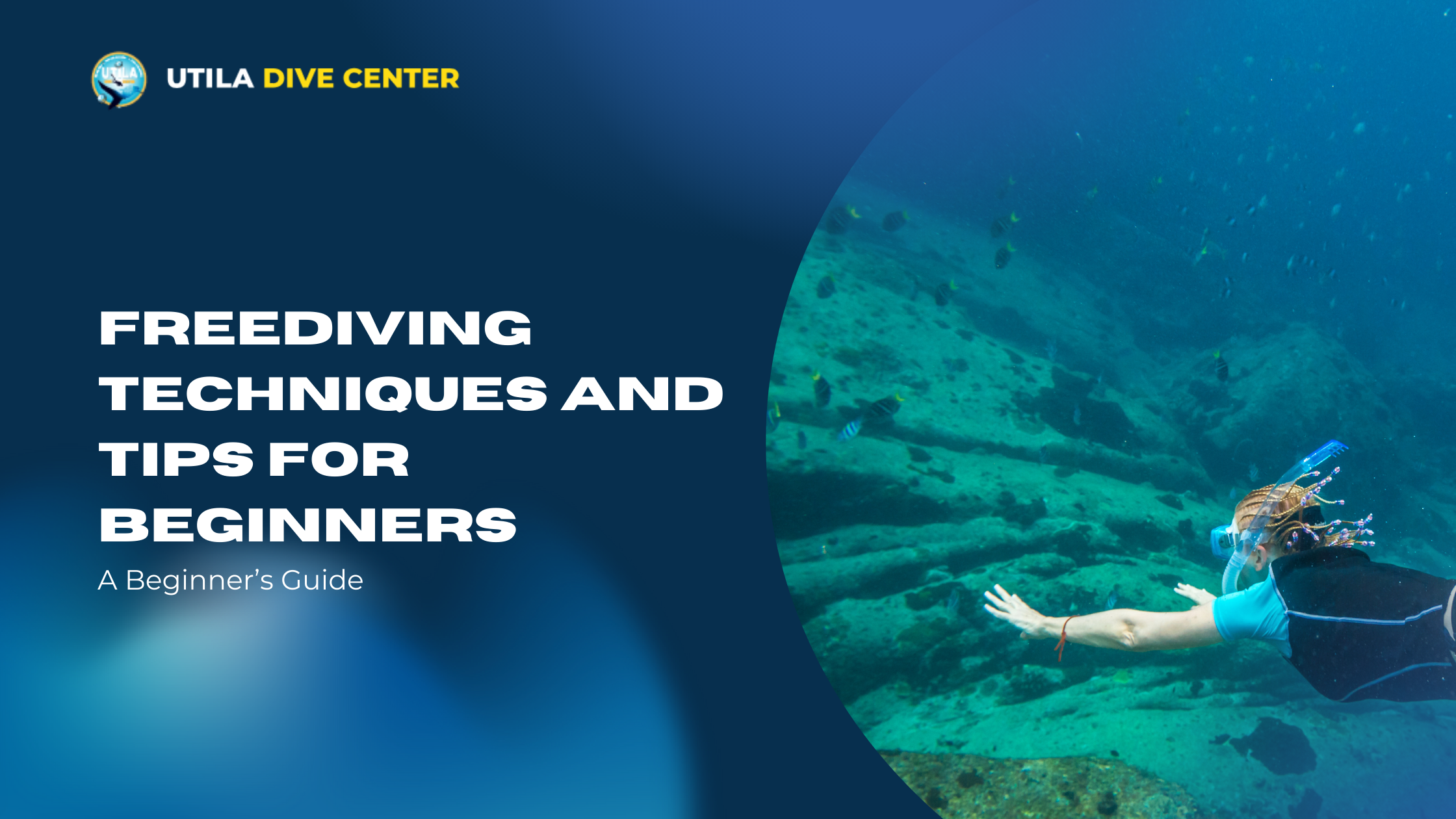
Freediving Techniques and Tips For Beginners
Freediving Techniques and Tips | Beginners Guide
By: Manny Lagos | Date: 2025-02-18T07:52:02.361Z
Imagine swimming within pristine blue waters, unhindered by any devices, it is just you and the vast breadth of water around you. Is that even possible? Absolutely.
This is done through freediving - which allows swimmers, divers, and just about everyone to dive underwater without utilizing any breathing apparatus. While it may seem like a daunting endeavor at Utila Dive Center we believe that every breath counts and that with proper freediving techniques, you can experience the beauty of freediving too.
Before Googling, “How to train for freediving?”, glance through this article, which will outline important freediving techniques, how to train for freediving, and provide tips on strengthening yourself for the experience. Our AIDA-certified freediving team has created this guide for your benefit!
Importance of Proper Techniques in Freediving
Technique is everything when it comes to freediving. Whether it is freediving for beginners or seasoned professionals, proper technique will not only help you have the best freediving experience but will also protect you from danger. Mastering basic freediving techniques will help you build a strong foundation before making the dive (literally).
At the core of freediving techniques is relaxation, you must be both physically and mentally relaxed as it will help you save oxygen - the most important component of your freediving experience.
With the different techniques, you will eventually master the art of holding your breath underwater.
Foundational Freediving Techniques
Before proceeding towards how do you freedive, let us delve into some foundational freediving techniques. Foundational freediving techniques include methods such as:
- Relaxation
- Breath holding
- Equalization
One of the most important freediving techniques is the different breathing practices you can incorporate.
Breathing Techniques for Freediving
People often wonder how to train for freediving. Often, practicing varied breathing techniques for freediving is the first rung of the ladder.
Here are some simple yet extremely effective breathing techniques that will not only help you hold your breath underwater but will also increase your oxygen capacity:
- Diaphragmatic breathing
Diaphragmatic breathing or belly breathing is one of the two ways humans breathe. It is the ideal one before taking our last inhalation and starting to hold our breath. It is very similar to when we are about to fall asleep, where only the belly moves while the rest of the body remains still. This way it is much easier to relax, as we use fewer muscles to breathe, and prepare for diving.
- Recovery breathing
Recovery breathing is an extremely important exercise once you resurface. In this technique, you take quick, active inhales followed by short, passive exhale without forcing the breath. This will help restore oxygen in your lungs, clear out carbon dioxide, and prepare you for the next dive!
- Slow breathing
This is one of the most simple but effective freediving techniques - you just have to breathe slowly and consciously! This is a lot like diaphragmatic breathing, only you don't breathe deeply. We breathe only the necessary amount of air your body needs, avoiding deep breaths to prevent hyperventilation.
Equalization Techniques for Beginners
An important component of free dive training is practicing equalization techniques - which open your Eustachian tubes to equalize the pressure in your ears. This will allow you to dive underwater without pain or discomfort.
Some popular equalization techniques for beginners include:
- Frenzel maneuver
In this technique, you do not need to use your breathing muscles to push the air from your lungs to your nasal cavity. Rather, the smaller muscles in your body are used to help you remain relaxed and controlled.
Here is how you can master the Frenzel maneuver:
- Pinch your nostrils.
- Touch your tongue to the roof of your mouth as if you’re making a ‘T’ or ‘K’ sound. Alternatively, you can squeeze your lips and cheeks as if you’re saying ‘P’ forcefully.
- Close your vocal folds and lift your larynx up to push air out of your mouth and into your nose.
- You will hear a pop or click sound as the air equalizes in your middle ear.
- Repeat the steps any time you need to equalize.
- Valsalva technique
In freediving for beginners, this technique comes in handy for equalization exercises. The Valsalva technique involves forcefully exhaling against a closed airway - which can unclog your ears. Here is how you can practice it:
- Either sit down or lie on your back.
- Take a deep breath.
- Exhale strongly against your closed mouth and nose, you may feel your diaphragm strain as well. Hold for 15 to 20 seconds.
- Gently open your nose and mouth and breathe out.
Perfecting the Duck Dive
Amongst the many freediving techniques, the duck dive is slightly complicated for beginners but very effective in helping beginner divers overcome the first few meters underwater without using too much energy.
Mastering this technique can be the difference between making or breaking your dive. An effective duck dive can take us up to 5 meters, it is the best way to break that positive buoyancy barrier.
Here is one way to master the duck dive:
- Laying horizontally and face-down in the water, take a full breath, then remove your snorkel from your mouth and equalize at the surface.
- Take a second to fully relax. One arm should be at your nose to equalize it while the other points towards the pool/ocean floor.
- Perform a flutter kick to get some momentum - until your hips are next to the dive line.
- Send your hips and backside up as if you are attempting to roll over a barrel. Bend your upper body down at a 90-degree angle. One arm remains pointing to the ocean/pool floor while the other remains on your nose when you need equalization. Your legs should be straight and parallel to the surface.
- Swing your legs straight up in the air. Once they are vertical, do an arm pull with your non-equalizing arm.
- Start finning once your fins are underwater.
Training Routine for Freediving
If you want to learn how to free dive, you must establish a training routine and incorporate certain freediving techniques and exercises before you take your first dive.
Here are some practices you can incorporate as part of your training routine.
Dry Training Exercises
Dry training exercises are predominantly done for strength and conditioning. These will help you improve your strength, flexibility, and mobility. Common dry training exercises undertaken by freedivers are:
- Static apnea training
Static apnea is one of the most accessible ways to train your tolerance to CO2 (carbon dioxide). You can do it dry, or for best results, in a pool or similar conditions. With several sessions of this training, your body and mind will feel more comfortable with the symptoms of high levels of CO2 in the body helping you to prolong your apneas. Remember that whenever you train in the water you need a qualified buddy.
- Stretching for flexibility
Stretching exercises for the diaphragm and intercostal muscles are very important as you will be able to get more air into your lungs and you will have more oxygen available to your body. Also stretching the neck and upper back will help make equalization easier. A stretching session of between 15-20 minutes before an apnea session is recommended so that your muscles are relaxed and the body consumes less oxygen.
Developing Mental Strength
Developing your mental strength during free diving training will come in handy in more ways than you can imagine. While developing your mental strength, you will notice changes in yourself such as:
- You will be more conscious of your breathing and movements
- You will be able to manage stress more efficiently
- You will be able to control your breathing
- You will gain more confidence to free-dive
Incorporating Yoga and Relaxation Practices
Yoga and relaxation practices are the best way to hone your physical and mental strength as you learn how to free dive.
Here are some techniques you can incorporate to relax yourself:
- Lie on a yoga mat in the Shavasana position and close your eyes. Take deep breaths and imagine the energy within you, pulsating from head to toe - with each breath.
- Scan your body for tension - begin from your head and make your way to your toes. Release tension with each exhale you take. Breath normally.
- Once your body is completely rested, be present in the moment. Keep your mind focused on the sounds, sights, feelings, etc.
Managing Buoyancy and Streamlining Your Body
Freediving for beginners often involves struggles with managing buoyancy. Here are some tips for managing that and streamlining your body in the water:
- Relax your body to reduce any kind of drag in the water. Tension of any kind increases the body’s surface area and resistance. The more relaxed you are, the more fluid your body and movements will be.
- Understand the different finning techniques for freediving and execute one that is more suitable to you.
- Select the right fins to streamline your body in the water. Consider factors such as the fins’ blades, stiffness, length, and material.
- Buoyancy check: One of the safety rules in freediving is to have neutral buoyancy at a depth of 10 meters. It will help you to make the descent more effortlessly, conserving your energy. In the ascent, just float near the surface and conserve oxygen in the most critical meters of your breath hold.
Common Challenges for Beginners and How to Overcome Them
Before jumping into how do you free dive, understand some common freediving challenges beginners may face so that you can prepare better and overcome them easily.
- Mastering equalization techniques is not easy and may take some time. But with the right instruction and plenty of practice, you will eventually be an expert at it.
- Holding your breath underwater for a prolonged period is often the biggest challenge. However, practicing the various breathing and relaxation techniques will help you build the capacity you need for freediving.
- Mental barriers prove to be bigger challenges in freediving than you might realize. Emotions such as fear and panic may hinder your experience. This is why, practicing yoga and relaxation techniques is of utmost importance. In the end, how relaxed you are underwater will be the crux of your freediving experience.
Conclusion
Be it learning innovative freediving techniques or understanding the art of freediving - there is an entire world awaiting you, as a swimmer, diver, or simply someone who is curious to try new things!
At Utila Dive Center, we provide expert guidance and plenty of hands-on practice, to help you unlock your full potential. If you want to learn how to freedive, check out our PADI freediving course. Or, in case you want to learn SCUBA diving first, check out the PADI Open Water Diver course.
So, come and join us here in the Caribbean!
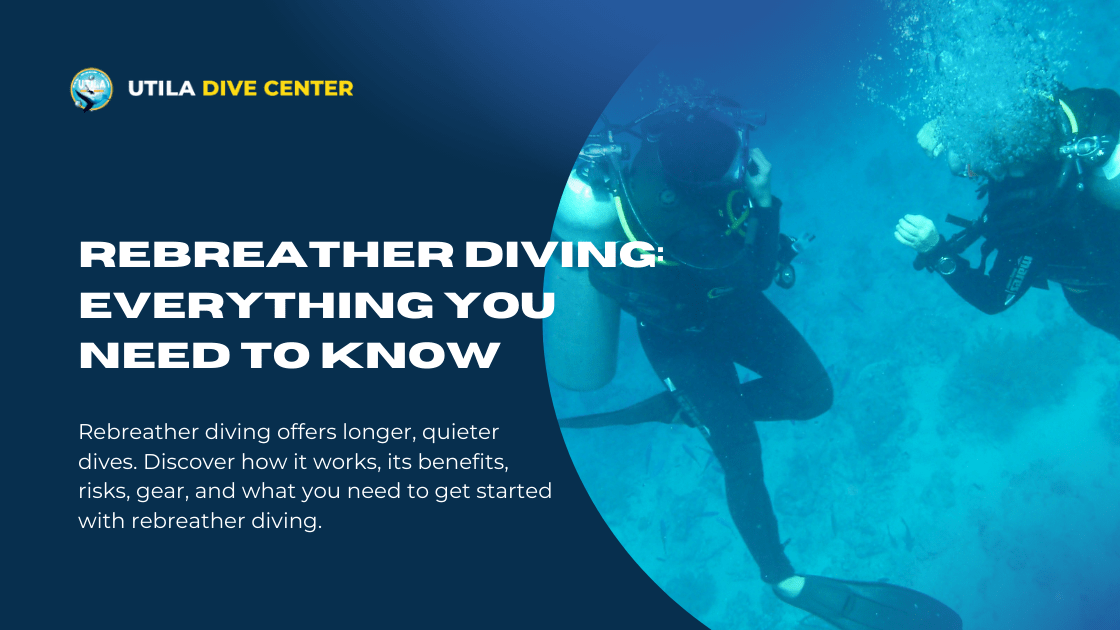
Rebreather Diving: Everything You Need to Know
Rebreather diving offers longer, quieter dives. Discover how it works, its benefits, risks, gear, and what you need to get started with rebreather diving.
Read more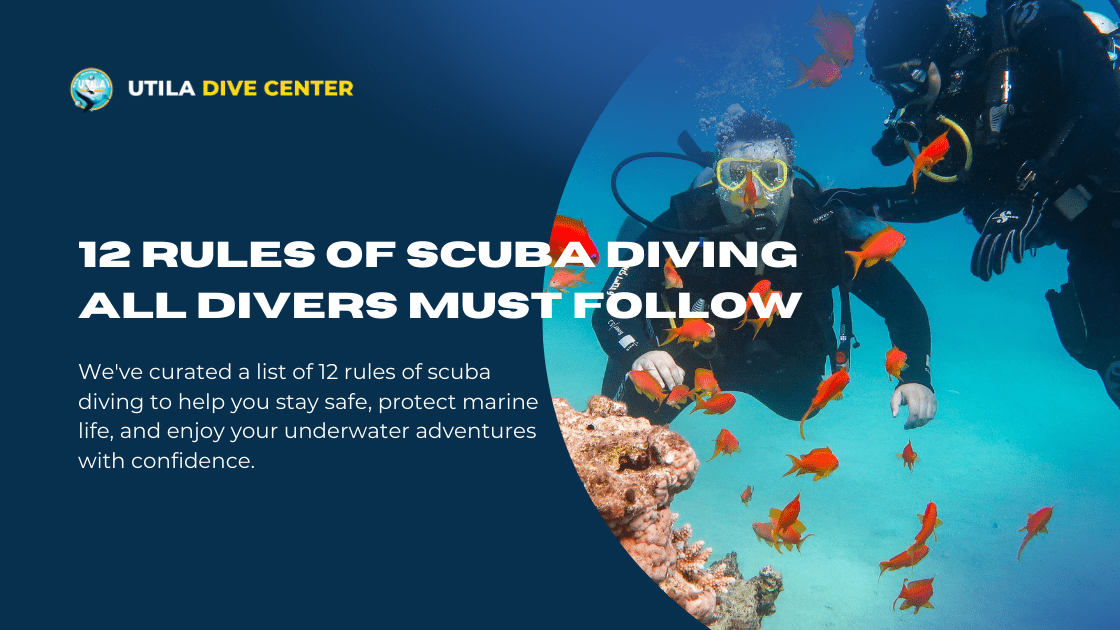
12 Rules of Scuba Diving All Divers Must Follow
We've curated a list of 12 rules of scuba diving to help you stay safe, protect marine life, and enjoy your underwater adventures with confidence.
Read more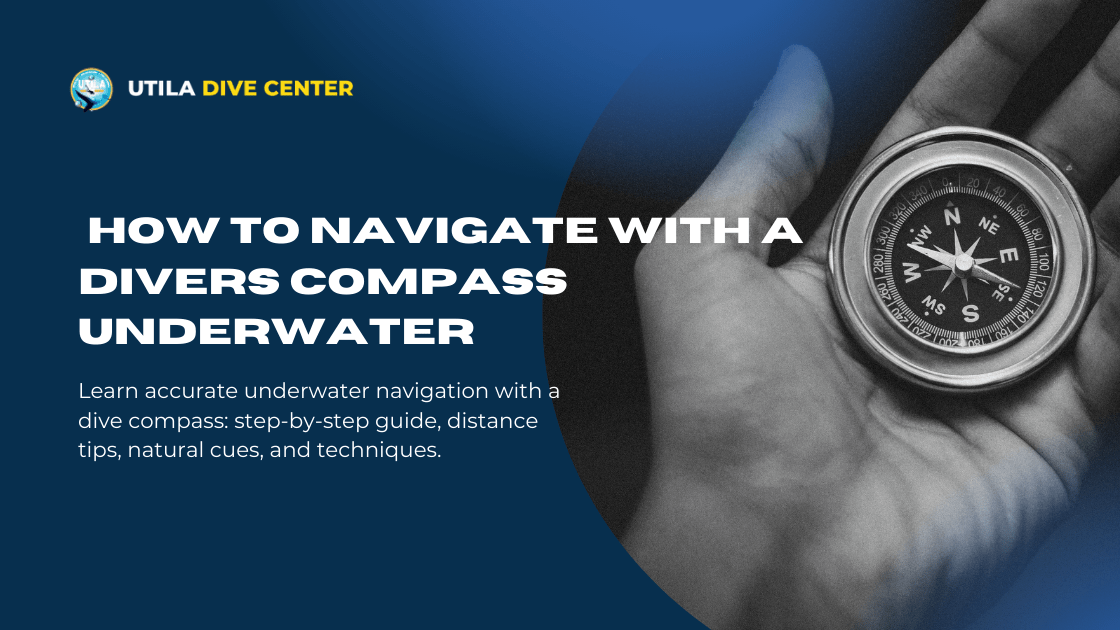
How to Navigate With a Divers Compass Underwater
Learn accurate underwater navigation with a dive compass: step-by-step guide, distance tips, natural cues, and techniques.
Read more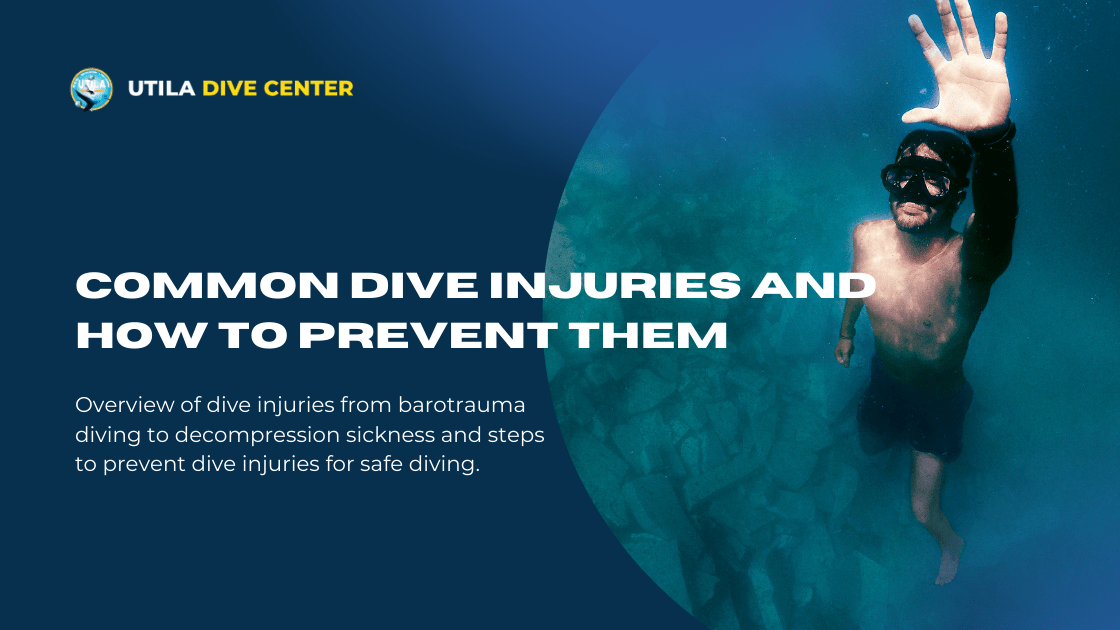
Common Dive Injuries and How to Prevent Them
Overview of dive injuries from barotrauma diving to decompression sickness and steps to prevent dive injuries for safe diving.
Read more